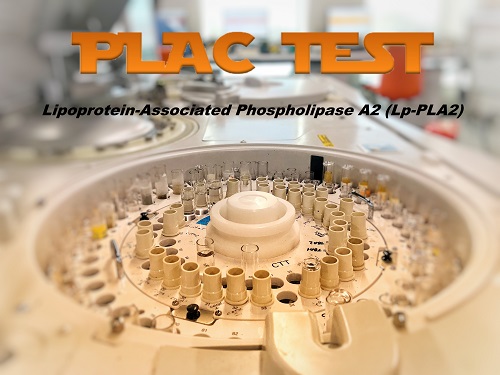Turkey's

Reference Laboratory
Services
Menu
Drug Levels
Microbiology
Clinical Biochemistry
Congenital Metabolic Disorders
Haematology Laboratory
Prenatal Screening Tests
Molecular Microbiology
Allergies
Transfusion Centers
LabBlog!

27 Ekm.22
Mevsimsel grip hastalığının etkenlerinden olan Influenza A ve B, Koronavirüs hastalığının etkeni SARS-CoV-2 virüsü, Solunum sinsityal virüsü enfeksiyonu etkeni RSV, Adenoviral solunum yolu enfeksiyonları etkeni olan adenovirüslerin hızlı tanısını sağlayan bir antijen testidir.

18 Tem.22
İnsanlarda ilk defa 1970 yılında Kongo Demokratik Cumhuriyeti’nde tespit edilmiştir. Sonrasında Orta ve Batı Afrika’daki ülkelerde görülen bu hastalığın sıklığı tam olarak bilinmemekle birlikte Kongo Demokratik Cumhuriyeti’nde 2005’e kadar yıllık 1000’e yakın olgu bildirilmiştir. Hastalık dönem dönem Afrika kıtasından enfekte hayvanlar ve insanlar aracılığıyla diğer kıtalara yayılmakta ve buralarda küçük küçük salgınlar yapmaktadır.

14 Ock.22
Genetik bir miras olarak ebeveynlerimizden aldığımız DNA’mızda bizlere ait bireysel özellikleri içeren tüm bilgiler bulunmaktadır. Bu bilgiler kan grubu, boy, kilo gibi bireysel özelliklerimizden, diyabet, kanser, kardiyovasküler hastalıklar gibi yüzlerce farklı duruma yatkınlık yada direnci belirleyen özelliklerle ilişkilidir. DNA’mızdaki bu bilgilerin çevresel faktörlerle etkileşmesi sonucu kişisel özelliklerimiz ve hastalıklar ortaya çıkabilmektedir.

22 Ara.21
PLAC TEST (Lp- PLA2 Aktivitesi) Kalp Hastalığı Riskinizi Biliyor musunuz ?
PLAC testi; kanda Lp-PLA2 enzim aktivitesini ölçen ve koroner kalp hastalığı riskini tahmin etmek için kullanılan bir belirteçtir.
Congenital metabolic disorders are pathologic presentations as a result of defects which occur due to the synthesis or catabolism of proteins, carbohydrates and fatty acids. These congenital metabolic disorders frequently due to autosomal recessive transgression may pose serious metabolic problems and are generally seen in early adolescence. As a pathologic condition, metabolic disorders present themselves as a result of incorrect genetic information in the development or functioning of the enzyme whose products are lacking or are insufficient.Owing to the defective enzyme, the necessary end products can not be produced and primary materials and/or metabolytes, developed by alternative means, begin to collect and create a toxic effect on the body. In some patients, materials collected will migrate through to other tissues and damage distant organs.Congenital Metabolic Disorders
Clinical symptoms on a wide and varied spectrum, in each congenital metabolic disorder patient’s case, may vary from light to severe. Methods to determine metabolic disorders before any symptoms present themselves are called metabolic screening tests. Metabolic screening tests attempt to decrease the rate of morbidity and mortality through necessary treatment to be provided by diagnosis of disorders before any symptoms are presented.
Diseases to be screened should be those diseases which are encountered with sufficient frequency in the general public and –on early diagnosis- should have an effect on their prognosis or should be completely treatable.
Regarding neonatal screening tests, there is worldwide agreement on diagnosis of phenylketanuria and congenital hypothyroidism. There is general agreement for screening tests to be done with haemoglobinopathy’s, classic galactosemia, MSUD, biotinidase deficiency, homosistinuria and congenital adrenal hyperplasy. At present, congenital hypothyroidism, biotinidase deficiency and phenylketanuria are being studied and fall within the national screening program. In this country, as a result of inbreeding and high rates of birth, congenital metabolic disorders are more frequently encountered. For example, with a frequency of 1/10000 phenylketanuria cases in general, we show 1/4500 cases and with 1/60000 biotinidase deficiency cases in general, we show 1/11000 cases. Newborn heel blood sampling: blood sampling should ideally be done on day 3-5. In phenylketonuria, the newborn should at least have been fed for a period of 24 hours. A few drops of blood taken from a prick of the heel are sufficient. These drops of blood are absorbed onto a filter paper strip. The filter paper strip should identify the newborn from whom the sample was taken and the newborn’s feeding status and age at time of sampling.
If an exchange transfusion is to be performed on the newborn infant, a blood sample should be taken either before or 48 hours following the transfusion. The skin should be cleansed with 70% isopropyl alcohol before blood sampling is performed.
During sampling, care should be taken to avoid any possibility of sweat contamination. Each circle should be carefully filled and care should be taken to ensure that the blood sample has permeated both sides of the strip equally.
Bear in mind that too much or too little blood on the surfaces to be permeated will provide incorrect results. Following sampling, drops on the sampling strip should not be touched, they should not come into contact with eachother and they should be kept from coming into contact with moist of wet surfaces.
The samples should be dried at room temperature for a period of 2-3 hours and should be kept from coming into contact with light or heat sources. Our laboratory routinely screens for congenital hypothyroidism, biotinidase deficiency, fatty acid oxidation defects, aminoacid metabolic disorders, urea cycle enzyme disorders and organic acidemia. With evidence of a finding, our laboratory informs the birth clinic, the physician and/or the parents for a range of advanced testing options. However, the initial findings may not necessarily mean the infant has one of the disorders as identified by the screen. It is frequently observed that children undergoing a second screening provide normal results. Then again, any signs of congenital metabolic disorders in newborn infants should be treated as such until these are proven to the contrary.
Screening tests are not diagnostic tests. As a result, if an irregular or abnormal result is obtained, further diagnostic tests must be performed.
Congenital Hypothyroidism (CH):
Congenital Hypothyroidism (CH): while observed worldwide in 1/3500 -1/4000 births there is an increased incidence in our country. Causes for CH are seen as thyroid dysgenesis (atresia, ectopy, hypoplasy) dyshormonogenesis, iodine deficiency, thyroid hormone resistance and other causes. Worldwide, there are two methods used in CH screening:
1- TSH (Thyroid Stimulating Hormone) screening and T4 measurement if required
2- T4 screening and TSH measurement if requiredIn this country, TSH screening is used as a matter of principle. The TSH screen will provide incorrect results in theevaluation of central hypothyroidism and hypothyroxinemia if there is a deficiency of thyroxine bonding globuline and a latent rise of the TSH. Whereas in cases screened by a T4 measurement, and upon suspecting primary hypothyroidism with low T4 values, a TSH check would diagnose central hypothyroidism. However, subclinical hypothyroidism cases with normal T4 values and a latently elevating TSH can be missed; which is why the ideal is to perform both TSH and T4 readings in unison. TSH values will increase in the 30 minutes following birth and rapidly decline within 24 hours and will continue to fall for the next two days. The screen should be conducted between 48 hours and 4 days. False positive values will be obtained in screens performed before 48 hours. It is possible to wait until the 7th day in pre-term infants. Children with congenital hypothyroidism generally exhibit non-specific symptoms, and may sometimes exhibit no symptoms at all. Serious mental retardation is seen in case a late diagnosis is made or in those cases which are left untreated. If early diagnosis can not be made, permanent mental retardation is inevitable. If the deficient hormone can be replaced in time, the infants metabolism can be restored and healthy growth can be achieved.
If an exchange transfusion is to be performed on the newborn infant, a blood sample should be taken either before or 48 hours following the transfusion. The skin should be cleansed with 70% isopropyl alcohol before blood sampling is performed.
During sampling, care should be taken to avoid any possibility of sweat contamination. Each circle should be carefully filled and care should be taken to ensure that the blood sample has permeated both sides of the strip equally.
Bear in mind that too much or too little blood on the surfaces to be permeated will provide incorrect results. Following sampling, drops on the sampling strip should not be touched, they should not come into contact with eachother and they should be kept from coming into contact with moist of wet surfaces.
The samples should be dried at room temperature for a period of 2-3 hours and should be kept from coming into contact with light or heat sources. Our laboratory routinely screens for congenital hypothyroidism, biotinidase deficiency, fatty acid oxidation defects, aminoacid metabolic disorders, urea cycle enzyme disorders and organic acidemia. With evidence of a finding, our laboratory informs the birth clinic, the physician and/or the parents for a range of advanced testing options. However, the initial findings may not necessarily mean the infant has one of the disorders as identified by the screen. It is frequently observed that children undergoing a second screening provide normal results. Then again, any signs of congenital metabolic disorders in newborn infants should be treated as such until these are proven to the contrary.
Screening tests are not diagnostic tests. As a result, if an irregular or abnormal result is obtained, further diagnostic tests must be performed.
Congenital Hypothyroidism (CH):
Congenital Hypothyroidism (CH): while observed worldwide in 1/3500 -1/4000 births there is an increased incidence in our country. Causes for CH are seen as thyroid dysgenesis (atresia, ectopy, hypoplasy) dyshormonogenesis, iodine deficiency, thyroid hormone resistance and other causes. Worldwide, there are two methods used in CH screening:
1- TSH (Thyroid Stimulating Hormone) screening and T4 measurement if required
2- T4 screening and TSH measurement if requiredIn this country, TSH screening is used as a matter of principle. The TSH screen will provide incorrect results in theevaluation of central hypothyroidism and hypothyroxinemia if there is a deficiency of thyroxine bonding globuline and a latent rise of the TSH. Whereas in cases screened by a T4 measurement, and upon suspecting primary hypothyroidism with low T4 values, a TSH check would diagnose central hypothyroidism. However, subclinical hypothyroidism cases with normal T4 values and a latently elevating TSH can be missed; which is why the ideal is to perform both TSH and T4 readings in unison. TSH values will increase in the 30 minutes following birth and rapidly decline within 24 hours and will continue to fall for the next two days. The screen should be conducted between 48 hours and 4 days. False positive values will be obtained in screens performed before 48 hours. It is possible to wait until the 7th day in pre-term infants. Children with congenital hypothyroidism generally exhibit non-specific symptoms, and may sometimes exhibit no symptoms at all. Serious mental retardation is seen in case a late diagnosis is made or in those cases which are left untreated. If early diagnosis can not be made, permanent mental retardation is inevitable. If the deficient hormone can be replaced in time, the infants metabolism can be restored and healthy growth can be achieved.
Neonatal TSH measurement is made by the fluorometric enzyme immunoassay process. Cut-off values are at 10mIU/L. Many physicians will consider a TSH value above 10mIU/L after 2 weeks to be abnormal.
Phenylketonuria: in dietary form, phenylalanine, which is an essential aminoacid, is metabolized into thyrozine by the liver. Phenylalanine hydrocyclase enzyme and tetrahydrobiopterin, a co-factor, are required for this biochemical reaction. Phenylketonuria and hyperphenylalaninemia are autosomal congenital recessive transfer disorders which develop in association with phenylalanine hydrocyclase deficiency or biopterin metabolic disorders.
The hydroxylation reaction needed for the synthesis of phenylalanine to thyrosine has been slowed in these disorders.Hyperphenylalaninemia means that the plasma phenylalanine level is over 2 mg/dl (120 µmol/L
Causes for hyperphenylalaninemia:
A quantitative measurement of each sample is achieved by the addition of the standard isotope marker for the metabolite to be measured. Tandem Mprovides rapid results of complex sam without a need for chromatographic separation or purification and is able to provide analysis of a large number of ton a single drop of blood. The Tandemis reliable and provides low rates both false positive and false negative result and is also cost effective. The TMS can measure for levels in free carnithins, carnithin aesthers (C2, C3, C4, C5, C5, C6, C8, C10, C10:1, C12, C14, C14:1, C1C14-OH, C16, C16:1, C16-OH, C16:1-OH,C18, C18:1-OH, C3DC, C4-OH, C5DC, COH, C6DC), aminoacids, (phenylalanin thyrosine, methionine, alanine, valine,leucine-isoleucine, ornithine, citrullinearginine, argininosuccinic acid and glycine).
This method is able to identify the following:
In a biotinase deficiency biotin, can not break free of the biositin (lysine based biotine) and the biotnil peptides and therefore endogenic biotin can not be re-cycled. Worldwide, Turkey is one of the countries where biotinase deficiency, an autosomal recessive disorder, is most widely seen. Clinical evidence presents itself in the form of metabolic acidosis, dermal findings, loss of sight and hearing,convulsions and various neurological symptoms. Early diagnosis and treatment of biotinase deficiency is of critical importance.
Late diagnosis and treatment may result in neurological sequels and death. Colorimetric testing is used in the diagnosis of biotinase deficiency. Screening is not affected by blood sampling, breast feeding or dietary requirements of the infant. However blood samples may provide false positives if these are subjected to high temperatures and sunlight.
Phenylketonuria: in dietary form, phenylalanine, which is an essential aminoacid, is metabolized into thyrozine by the liver. Phenylalanine hydrocyclase enzyme and tetrahydrobiopterin, a co-factor, are required for this biochemical reaction. Phenylketonuria and hyperphenylalaninemia are autosomal congenital recessive transfer disorders which develop in association with phenylalanine hydrocyclase deficiency or biopterin metabolic disorders.
The hydroxylation reaction needed for the synthesis of phenylalanine to thyrosine has been slowed in these disorders.Hyperphenylalaninemia means that the plasma phenylalanine level is over 2 mg/dl (120 µmol/L
Causes for hyperphenylalaninemia:
- Primary (Congenital) hyperphenylalaninemia causes: Phenylalanine hydorcyclase deficiency (heavy classic PKU, medium hyperphenylalaninemia, light hyperphenylalaninemia), biopterin metabolic disorders (Guanosine triphosphate cyclohydrase deficiency), 6-piruvial-tetrahydropterin synthase deficiency, dihydroterin reductase deficiency, pterin carbinolamine dehydratase deficiency, semiapterine reductase deficiency)
- Secondary (acquired) hyperphenylalaninemia causes may be listed as Maternal PKU, tyrosinemia, temporary neonatal hyperphenylalaninemia, drug related (methotrexate, trimethoprim) aspartame, heavy inflammatory response, renal disease and liver diseases.
A quantitative measurement of each sample is achieved by the addition of the standard isotope marker for the metabolite to be measured. Tandem Mprovides rapid results of complex sam without a need for chromatographic separation or purification and is able to provide analysis of a large number of ton a single drop of blood. The Tandemis reliable and provides low rates both false positive and false negative result and is also cost effective. The TMS can measure for levels in free carnithins, carnithin aesthers (C2, C3, C4, C5, C5, C6, C8, C10, C10:1, C12, C14, C14:1, C1C14-OH, C16, C16:1, C16-OH, C16:1-OH,C18, C18:1-OH, C3DC, C4-OH, C5DC, COH, C6DC), aminoacids, (phenylalanin thyrosine, methionine, alanine, valine,leucine-isoleucine, ornithine, citrullinearginine, argininosuccinic acid and glycine).
This method is able to identify the following:
- Aminoacid metabolic disorders; phenylketonuria, tyrosinemia, Maple Syrup Urine Disease (MSUD),homocystinuria, hypermethyoninemia, hyperglycinemia, hyperornythinemia.
- Fatty acid oxidation disorders; Short Chain Acyl CoA Dehydrogenase Deficiency or SCAD, Medium Chain Acyl CoA Dehydrogenase Deficiency or MCAD, Long Chain 3-hydroxyacyl CoA Dehydrogenase Deficiency or LCHAD, Very Long Chain Acyl CoA Dehydrogenase Deficiency or VLCAD, carnithin palmitoil deficiencies, Glutaric Acidemias, Carnithin Uptake Disorder.
- Organic Acidemias; Propionic academia, methylmalonic academia, multiple carboxylase deficiency3-methylchrontyl-CoA carboxylase deficiency, 2-methylbuturyl- CoA dehydrogenase deficiency, isovaleric academia, beta ketothyalase deficiency, 3-hydroxy 3 methyl-glutaryl lyase deficiency, glutaril-CoA Dehydrogenase Defficiency, Holocarboxylase Synthetase Defficiency.
- Urea Cycle Defects; Citrulinemia,Argininosuccinic Aciduria, Argininemia.
In a biotinase deficiency biotin, can not break free of the biositin (lysine based biotine) and the biotnil peptides and therefore endogenic biotin can not be re-cycled. Worldwide, Turkey is one of the countries where biotinase deficiency, an autosomal recessive disorder, is most widely seen. Clinical evidence presents itself in the form of metabolic acidosis, dermal findings, loss of sight and hearing,convulsions and various neurological symptoms. Early diagnosis and treatment of biotinase deficiency is of critical importance.
Late diagnosis and treatment may result in neurological sequels and death. Colorimetric testing is used in the diagnosis of biotinase deficiency. Screening is not affected by blood sampling, breast feeding or dietary requirements of the infant. However blood samples may provide false positives if these are subjected to high temperatures and sunlight.
Analysis for Organic Acids in Urine
Organic acids are intermediary products which appear in metabolic pathways. Congenital organic acid metabolic disorders are autosomal recessive disorders observed in approximately 1 in 3000 live births. If there is a blockage in one or a number of these metabolic pathways it results in a reduction of products which should be found following the blockage and at the same time results in a building up, or collection, of intermediary products (organic acids) just before the blockage. Collected organic acids are expelled via urination. A urine organic acid analysis is a method used to determine these metabolite types. The most frequently observed disorders of this type in our country are methyl malonic acidemia and propionic acidemia.
Clinical cases in which urine organic acid analyses are of help:
Our laboratory processes spot or 24 hour frozen urine samples using the GC/MS method. Gas Chromatography (GC) is an important multipurpose technique which provides rapid analysis and accurate results in the separation of complex mixtures. Separation is achieved in GC capillary columns and the sample is then analysed in the Mass Spectrometer (MS). Analytical apparatus, mass spectrometers in an electro-magnetic field realize the separation of charged particles in terms of their mass to charge ratio.
GC and MS combinations are sensitive and specific apparatus which are used in the identification of organic compounds. 33 different organic acids can be reported under urine organic acid testing. While orothic acid and succinylacetone can be determined under a urine organic acid profile, a request for these to be performed separately can also be placed. Analysis results are normalized to the urine creatinin concentration. We are a member of the ERNDIM External Quality Assurance Program for the testing of urine organic acids.
Clinical cases in which urine organic acid analyses are of help:
- Serious and resistant metabolic acidosis of unknown nature with an anion deficit
- Presence of serious and heavy ketanuria especially in the newly born stage
- Patients diagnosed with hyperammonemia, hypoglycemia, lactic acidemia during acute encephalopathy
- The presence of serious neurological symptoms such as convulsions, stroke, lack of psychomotor development
- Organic acidemias
- Cerebral organic acidemias
- Fatty acid oxidation disorders
- Carnithin metabolic disorders
- Amino acid metabolic disorders
- Urine cycle enzyme disorders
- Propionic academia
- Methylmalonic academia
- Isovaleric academia
- Beta-ketothiolase deficiency
- Multiple carboxylase deficiency
- Holocarboxylase synthetase deficiency
- 3-methylcrotonyl-CoA carboxylase deficiency
- 3-hydroxy 3-methylglutaryl CoA lyase deficiency
Our laboratory processes spot or 24 hour frozen urine samples using the GC/MS method. Gas Chromatography (GC) is an important multipurpose technique which provides rapid analysis and accurate results in the separation of complex mixtures. Separation is achieved in GC capillary columns and the sample is then analysed in the Mass Spectrometer (MS). Analytical apparatus, mass spectrometers in an electro-magnetic field realize the separation of charged particles in terms of their mass to charge ratio.
GC and MS combinations are sensitive and specific apparatus which are used in the identification of organic compounds. 33 different organic acids can be reported under urine organic acid testing. While orothic acid and succinylacetone can be determined under a urine organic acid profile, a request for these to be performed separately can also be placed. Analysis results are normalized to the urine creatinin concentration. We are a member of the ERNDIM External Quality Assurance Program for the testing of urine organic acids.
Quantitative Amino Acid Analysis
Metabolic disorders; are pathological presentations occuring as a result of the syntheses of proteins, carbohydrates and fatty acids or the breakdown thereof. Mostly autosomal recessive disorders first come to mind in Turkey where the incidence of inbreeding is frequent. The quantitative aminoacid analysis is used both to determine and monitor acid metabolism disorders as well as to determine certain other secondary metabolic disorders such as; renal deficiency, liver diseases, muscular diseases, neoplastic diseases, endocrine disorders and nutritional disorders.Should the newborn screen provide positive results, the 3 most frequently used means of evaluation are the organics in urine test, amino acids in serum and acyl carnithin’s tests. Although symptoms of aminoacid metabolic disorders may present themselves during the newborn, infant, adolescent or adult stages they will especially manifest themselves during the newborn and infancy stages.
A quantitative aminoacid analysis should be performed in presence of the following clinical symptoms or findings.
1-methyl hystidine, 3-methyl hystidine, alpha-amino butyric acid, alpha-amino adipic acid, gamma- amino butyric acid, cystationine, lysine, cystine and cysteine.
A quantitative aminoacid analysis should be performed in presence of the following clinical symptoms or findings.
- Lethargy, coma, vomiting
- Hyperammonemia
- Metabolic acidosisInexplicable lack of growth or development
- Abnormal newborn screening results
- Metabolic decompensation
1-methyl hystidine, 3-methyl hystidine, alpha-amino butyric acid, alpha-amino adipic acid, gamma- amino butyric acid, cystationine, lysine, cystine and cysteine.
These tests aid in diagnosis of the following disorders;
- Phenylketonuria
- Maple Syrup Urine Disease (MSUD)
- Tirosinemia Types
- Citrullinemia
- Argininemia
- Urine Cycle Disorders
- Nonketotik hyperglycinemia


